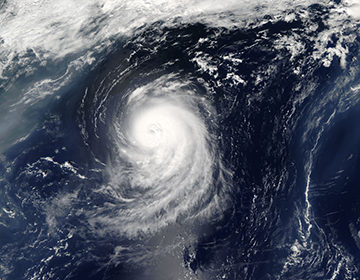We’ve written about Earth and Environmental Science professor Benjamin Horton’s sea-level work both in the September/October 2011 issue of the Gazette and on this blog.
Horton and Environmental Science PhD student Andrew Kemp pieced together an unprecedented 2,000 year timeline of sea-level rise along the east coast.
Now, Horton, Kemp and team of others are working with a 3-year $1.5 million grant form the National Oceanic and Atmospheric Administration to study sea-level rise and flooding from hurricanes along the Atlantic and Gulf coasts.

One of the questions that Horton’s research will answer is how much flooding would Hurricane Irene cause if it occurred years from now, when sea-levels are higher.
“The aim of the research is to provide predictions of costal flooding from sea-level rise and storm surges from hurricanes, “ Horton says “Hopefully we’ll have regionally specific predictions of flooding by sea-level rise.”
Whereas scientists have been able to predict general trends in sea level rise, Horton and his team will try to find how sea-level rise varies spatially – from Connecticut all the way down to Florida.
The study will also answer questions about the effects of hurricanes and tropical storms in the future where sea-levels are higher.
Ideally, Horton says, his team will be able to tell coastal managers what sort of flooding to expect in their region as sea-levels continue to rise.
It’s harder than it sounds. Existing projections of the global mean sea-level rise tend to come out with huge errors. Horton and his team have to predict sea level change in specific regions. “The challenge is to provide meaningful regional projections,” Horton explains. “And that’s exciting.”
That’s also where Horton’s 2,000 years of sea-level records comes handy. Most existing projections of sea-level rise are based on past records since the beginning of what Horton calls the “observational period,” when scientists first began keeping track of sea-level. Horton’s team knows how sea-level has been acting for the past two millennia – which will help them more accurately predict the future.
When he applied for a faculty position at Penn, Horton says he wrote in his cover letter that he wanted to make the University the center of sea-level research in the country. “You know you say these sorts of things in your cover letter” Horton chuckles. “Big, bold statements.” But with this $1.5 million, he’s well on his way to achieving that vision.

